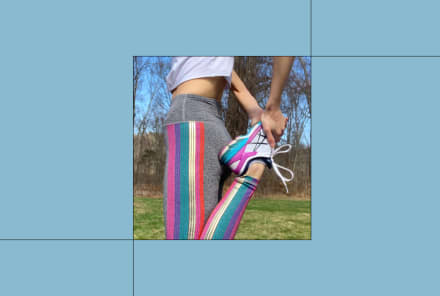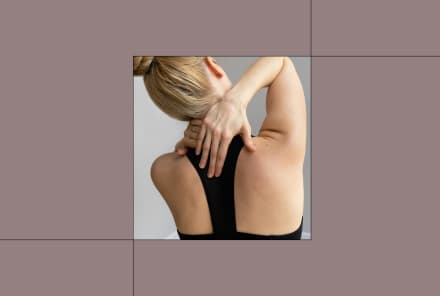Advertisement
4 Reasons You Should Definitely Skip Cardio Today


Cardio.
The word alone is enough to instill procrastination in even the most motivated gym-goer. Yet even in the face of plenty of excuses, the treadmill and its cohorts usually come out victorious, roping us in for yet another long bout of steady movement in the name of "burning calories."
It turns out the conventional wisdom of getting in at least 30 minutes of steady-state cardio in order to burn fat could actually be doing our bodies more harm than good—and is also a waste of time when it comes to fat loss.
Luckily, research has given us a multitude of legitimate excuses to finally escape the clutches of steady-state cardio. Read on to discover why dropping this form of cardio might just be one of the best decisions you can make for your waistline and hormonal health.
1. Cardio raises cortisol levels.
Cortisol, also referred to as the "stress hormone," tends to garner a lot of confusion. While it is essential to the body, as it's responsible for regulating our energy needs and waking us up in the morning, too much can wreak body-wide havoc. Namely, high circulating levels signal the body to store fat, especially around the abdomen.
Why and how do we end up with high cortisol levels? One word: stress.
When the body is under stress, cortisol comes into play by storing fat as an "emergency fuel" in the face of our stressor. While this is valuable in a true life-or-death situation, it's not an ideal state to be in on an average day. Which brings us to the kicker: Steady-state cardio has been proven to increase levels of cortisol.
So instead of aiding in fat loss, too many steady-state cardio sessions a week will actually cause our bodies to hold on to fat, especially around our midsection.
2. Cardio lowers an important thyroid hormone.
Thyroid hormones are directly responsible for the state of our metabolism and weight. A particular hormone produced by the thyroid, T3 or triiodothyronine, either rises or falls in response to diet and activity. In general, low T3 levels result in a lowered metabolism, which equals fewer calories burned not only during your workouts but overall throughout your day.
Prolonged, intense cardio sessions do just this by decreasing T3 output and potentially impairing future hormonal responses.
3. It lowers testosterone.
It may seem that the hormones testosterone and HGH (human growth hormone) are of concern only to men who lift heavy weights. However, it's important to note that these two hormones are extremely important for anyone, male or female, trying to lose fat and gain muscle.
In fact, research has shown that HGH is one of the premier hormones that promote synthesis of protein tissues and aids in metabolizing body fat for energy. Interestingly, steady-state cardio has been shown to lower both testosterone and HGH, which not only inhibits fat loss but can also cause fatigue, hot flashes, irritability, decreased muscle mass, and decreased bone density.
4. Overall, cardio is less effective at burning fat.
Ironically, the less time you spend performing steady-state aerobic exercise, the better your chances are for fat loss. When compared to high-intensity interval training (HIIT), which involves short, intense workouts, longer aerobic workouts were found to be less effective at reducing subcutaneous body fat.
The reason steady-state cardio is less effective is because it lacks the intensity that HIIT offers, which prompts the release of HGH (as we spoke of earlier) and catecholamines like adrenaline and norepinephrine.
These hormones stimulate the release of fat from fat stores to be used for energy and were found to be released in negligible amounts during steady-state aerobic exercise.
Steady-state cardio also lacks the "afterburn" effect that HIIT offers. Afterburn, otherwise termed excess post-exercise oxygen consumption (EPOC), happens after bursts of intense exercise (such as in HIIT workouts) when the body attempts to repair itself after a tough workout. This results in more calories burned not only during the exercise but up to 48 hours afterward as well.
So, what should you do instead?
1. Lift heavy.
Lifting heavy weights (a weight you can lift for roughly 6 to 8 reps) stimulates the all-important growth hormone and builds lean mass. When combined with compound lifts that utilize large muscle groups, such as squats, you'll rev your metabolism and burn major calories in a short amount of time.
2. Perform HIIT workouts.
HIIT workouts, which alternate periods of high-intensity exercise with short rest periods, are proven to increase your metabolism and harness the afterburn effect we spoke of earlier. Need ideas for how to structure a HIIT workout? Check them out here.
If you've been performing too much steady-state cardio and are feeling the hormonal effects and not seeing the weight-loss results you want, try shortening your workouts while upping the intensity. Your body will thank you for it.
Watch Next
Enjoy some of our favorite clips from classes
Enjoy some of our favorite clips from classes
What Is Meditation?
Mindfulness/Spirituality | Light Watkins
Box Breathing
Mindfulness/Spirituality | Gwen Dittmar
What Breathwork Can Address
Mindfulness/Spirituality | Gwen Dittmar
The 8 Limbs of Yoga - What is Asana?
Yoga | Caley Alyssa
Two Standing Postures to Open Up Tight Hips
Yoga | Caley Alyssa
How Plants Can Optimize Athletic Performance
Nutrition | Rich Roll
What to Eat Before a Workout
Nutrition | Rich Roll
How Ayurveda Helps Us Navigate Modern Life
Nutrition | Sahara Rose
Messages About Love & Relationships
Love & Relationships | Esther Perel
Love Languages
Love & Relationships | Esther Perel











